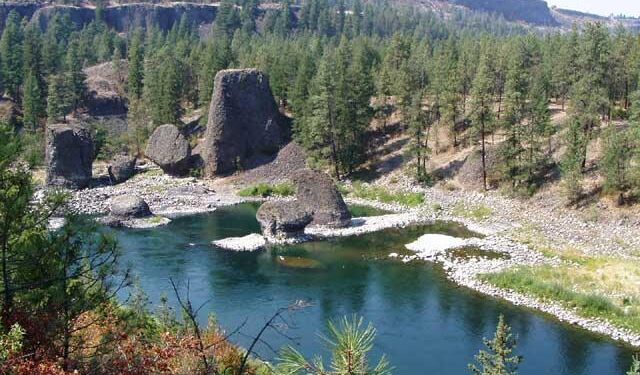Positive Outcomes from Spokane River Conservation Initiatives, According to the Department of Ecology
In an encouraging turn for environmental preservation, the Washington State Department of Ecology has released new insights that underscore the effectiveness of ongoing conservation initiatives aimed at rejuvenating the Spokane River. The latest findings indicate that efforts focused on enhancing water quality and restoring natural habitats are beginning to show substantial results, reflecting the commitment of local communities and organizations in safeguarding this essential waterway. As stakeholders assess their achievements, experts stress the necessity for continued collaboration and sustained investment in eco-friendly practices to protect the river’s health for future generations. This article examines key insights from the Department of Ecology, highlighting implemented strategies and their beneficial effects on both ecosystems and local communities.
Spokane River Revitalization: Notable Advances in Water Quality
Recent data from the Department of Ecology indicates a remarkable improvement in water quality within the Spokane River watershed, which has been subject to extensive conservation measures over recent years. Thanks to targeted initiatives, stakeholders have observed several significant advancements:
- Decreased Pollution Levels: Collaborative restoration projects have successfully reduced nutrient pollution levels, leading to healthier aquatic ecosystems.
- Enhanced Habitats: Restoration efforts along riverbanks and riparian zones have improved wildlife habitats, fostering biodiversity and boosting fish populations.
- Community Involvement: Local community engagement in conservation activities has cultivated greater environmental awareness and stewardship.
The progress achieved reflects a unified dedication towards improving Spokane River’s health. Ongoing monitoring by governmental bodies alongside non-profit organizations is vital for maintaining momentum and expanding successful practices. Below is a summary of documented improvements in water quality over the past year:
| Water Quality Metric | 2022 Levels | 2023 Levels | % Improvement |
|---|---|---|---|
| Nitrogen Concentration (mg/L) | 2.5 | 1.8 | 28% |
| Phosphorus Concentration (mg/L) | 0.5 | 0.3 | 40% |
| 6 .0 | 8 .5 < td>% Improvement 42% < / tr > < / tbody > < / table > < / div > Community Engagement: The Role of Local Stakeholders in Conservation EffortsThe achievements seen within Spokane River conservation highlight how crucial local stakeholders are in promoting ecological well-being. Engaged communities have been instrumental in developing strategies that not only protect natural resources but also enhance residents’ quality of life. By collaborating with various organizations including local government entities and conservation groups, these stakeholders have created a robust framework for ecological restoration that leads to measurable improvements in both water quality and biodiversity. The following key strategies were employed during these initiatives:
|































